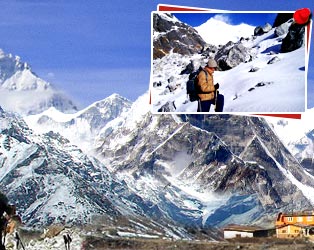The Himalayas is considered among the youngest
mountain ranges of the world. It passes through five nations: India,
Pakistan, Bhutan, China and Nepal. The Himalayas are a range of
mountains and not just a geographical feature.
Origin of Himalayas
The birth of Himalayas dates back to million of years ago. There were
series of stages, which led to the formation of the Himalayas. The
formation of the Himalayas is the result of a collision of India with
Asia along the convergent boundary. There were powerful earth movement
between the Indo-Australian Plate and the Eurasian Plate that resulted
in the creation of the Himalayan range. The earth movements raised the
deposits, which were laid down in the shallow Tethys Sea, which is on
the present location of the mountains. Today also there is constant
change and development in the mountains due to earthquakes and tremors.
The formation of the Andaman and Nicobar Islands in the Bay of Bengal
and the Arakan Yoma highlands in Myanmar is the result of this
collision. The collision of India with Asia was due the mechanics
beneath the earth's surface. There are various plates that collide,
recede and slide from each other at about 2 cm/year. This action beneath
the earth's surface leads to the rising of the Himalayas by about 5 mm
per year. The heat generated beneath the earth's surface results in this
action of collision. It is the process of convection that drives hot
current upwards due to less density and cold current downwards due to
more density. This movement of Indian plate into the Asian plate makes
this region very active and prone to earthquakes. In the future also the
plate will move like this causing changes in the structure of the
Himalayas. The height and width of the mountain will change according to
the action beneath the earth's surface. In the north the mountains will
be taller and smaller in the south while the width remains the same.
So this was mainly the reason behind the formation of the Himalayas.
Find more facts on Himalayas.



